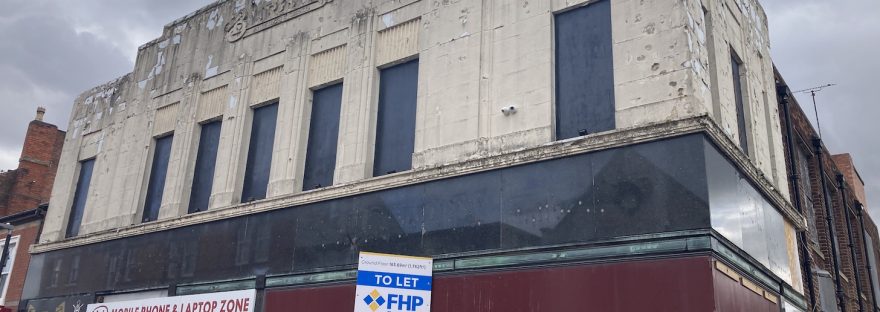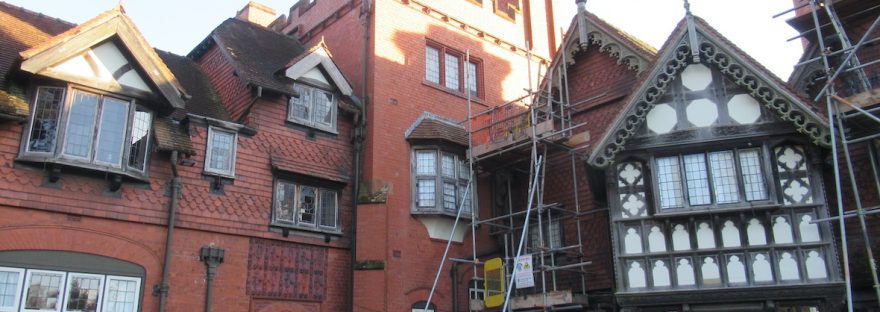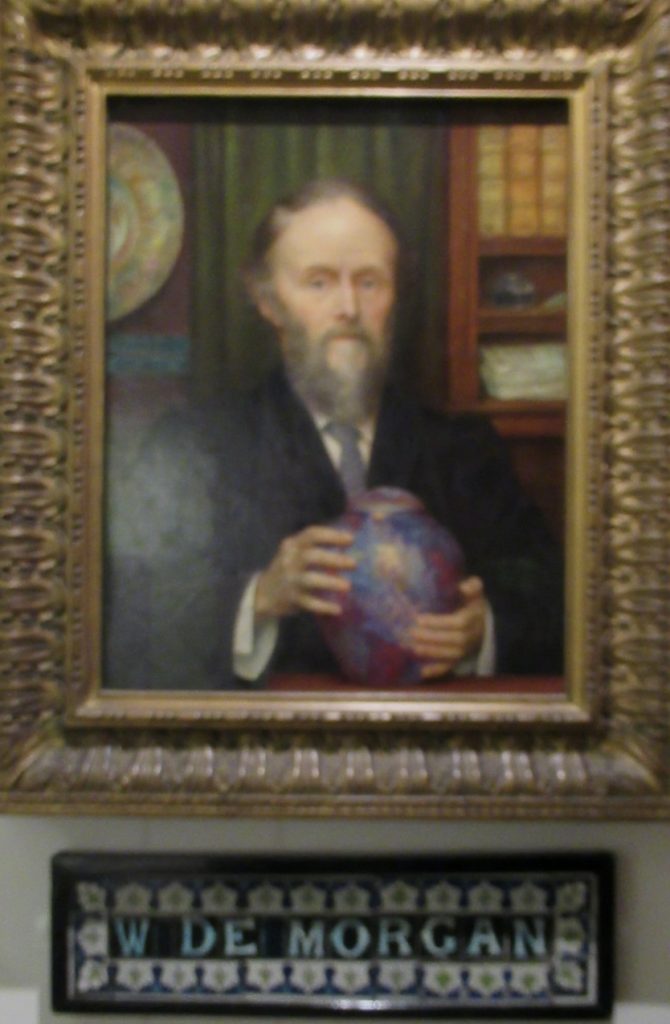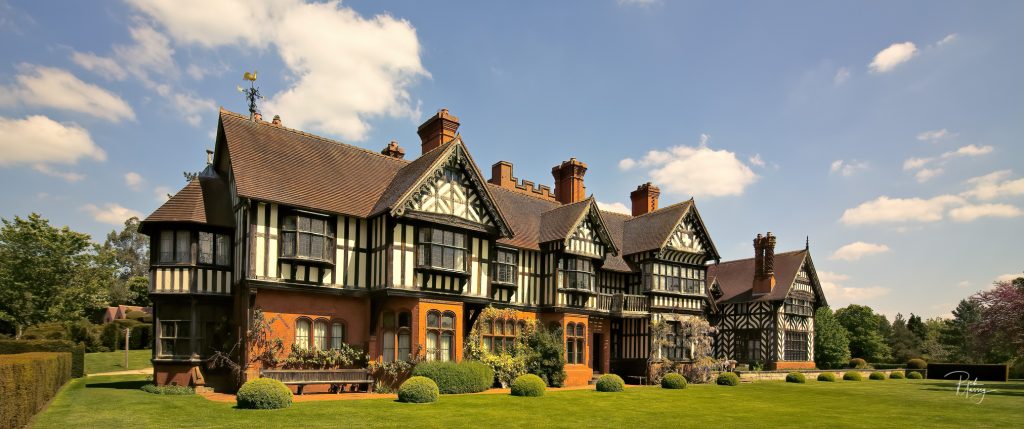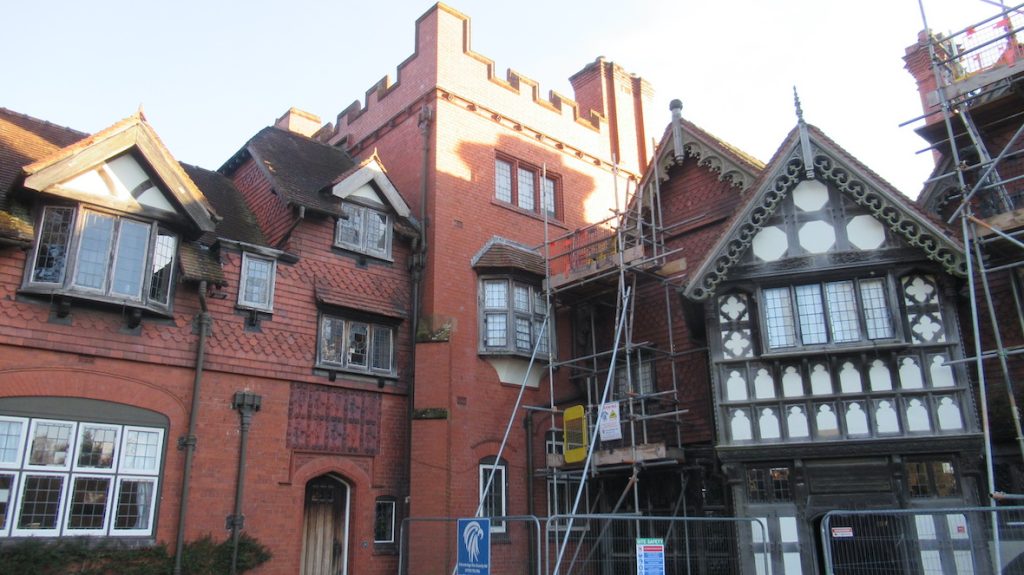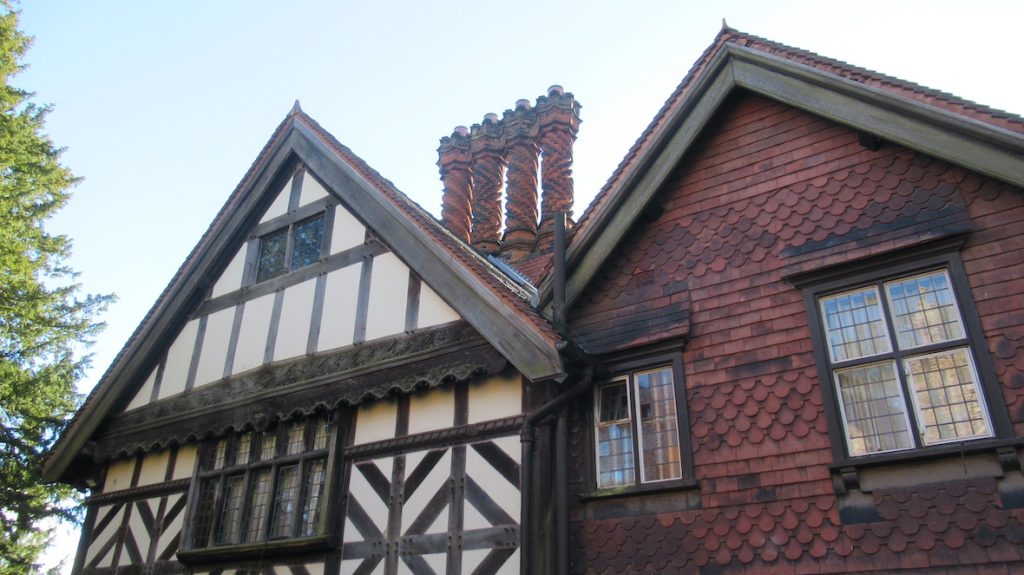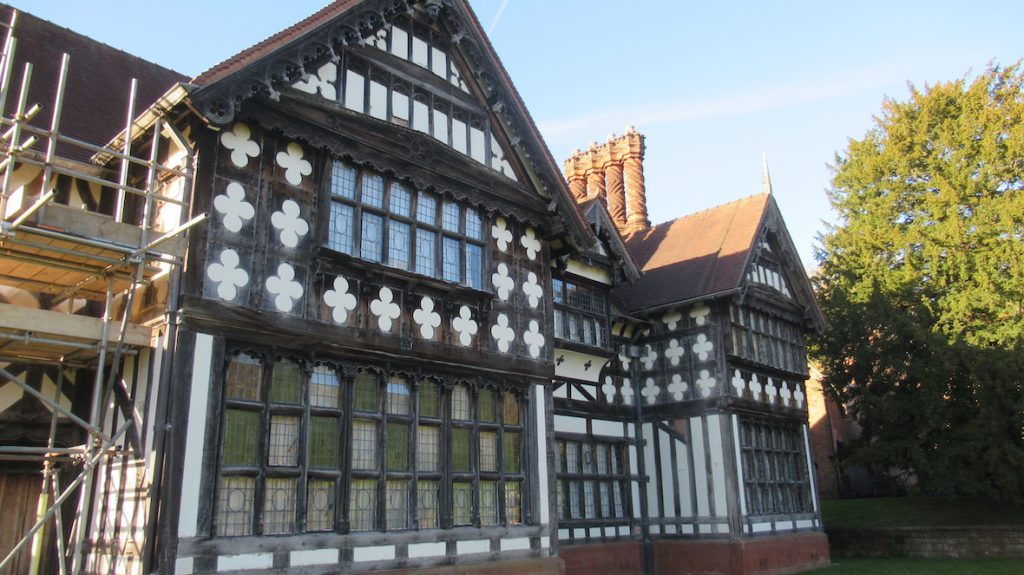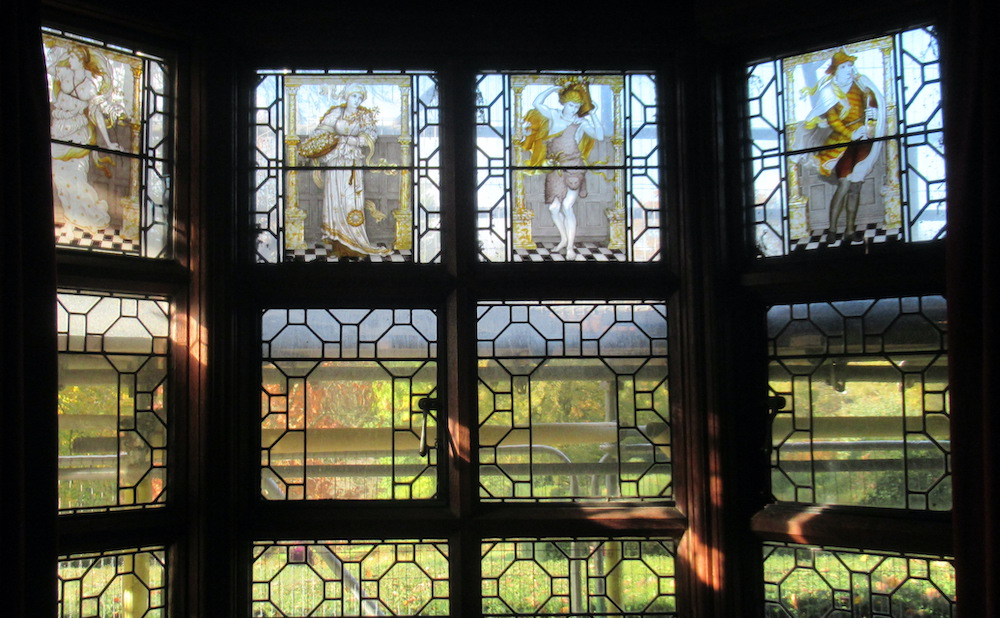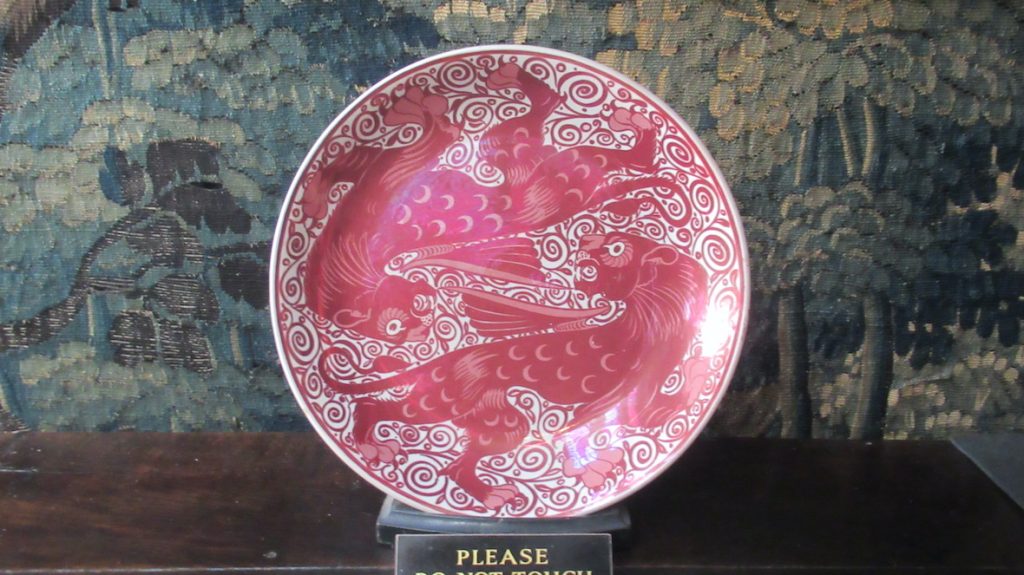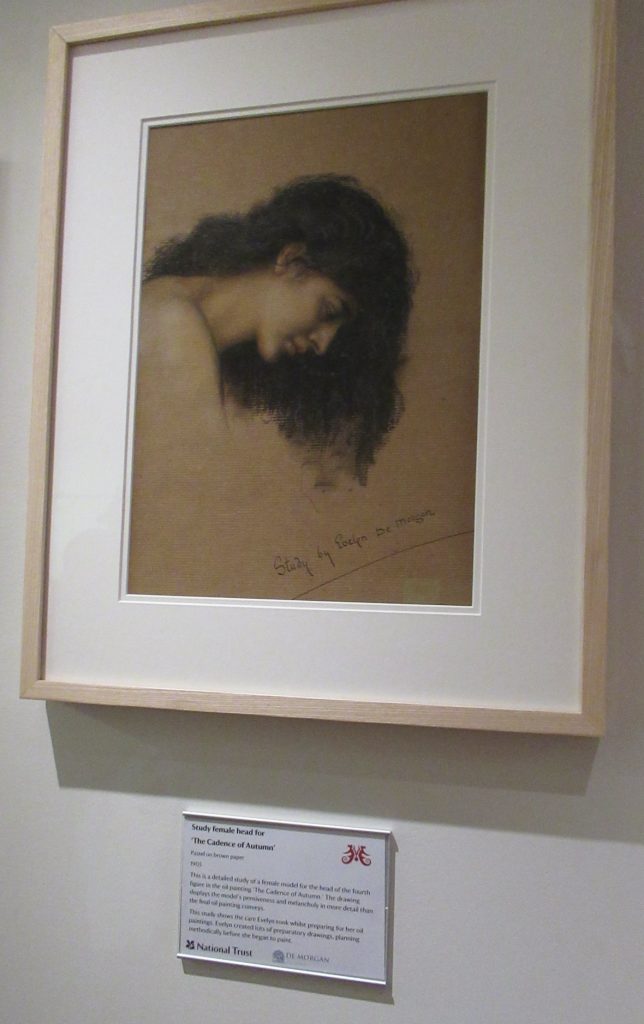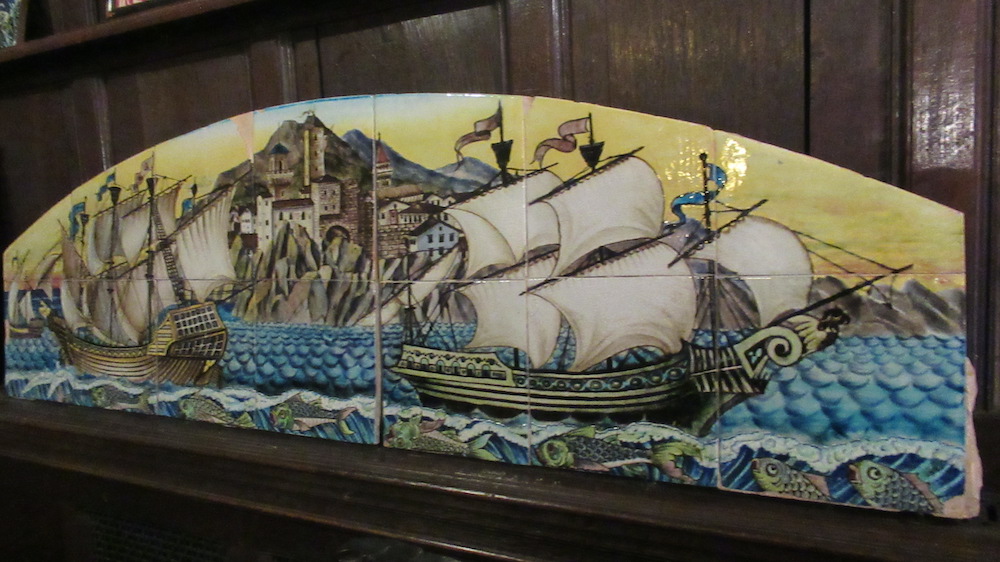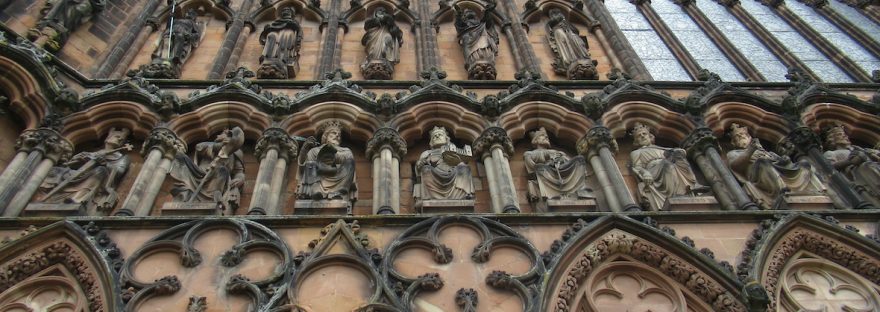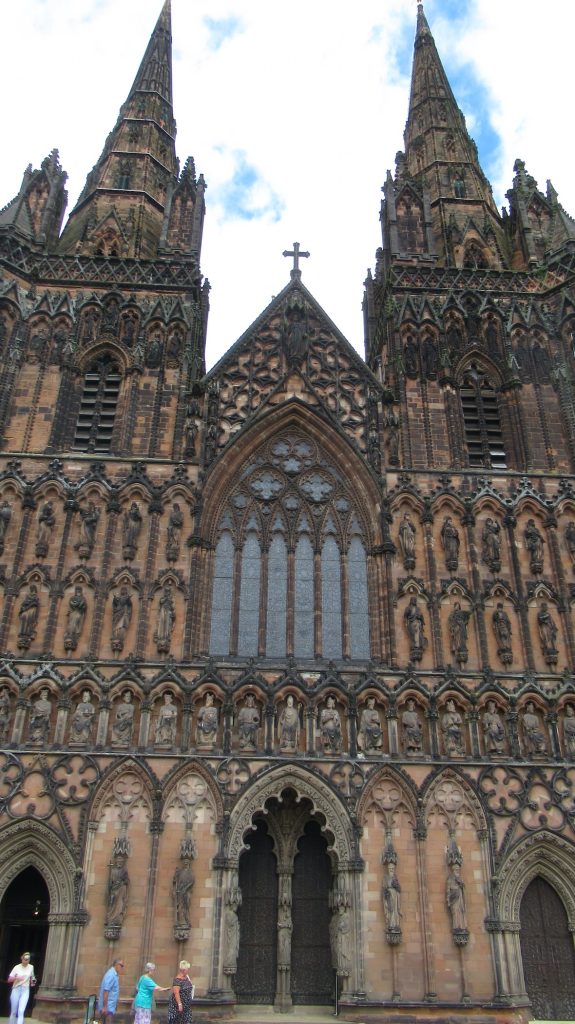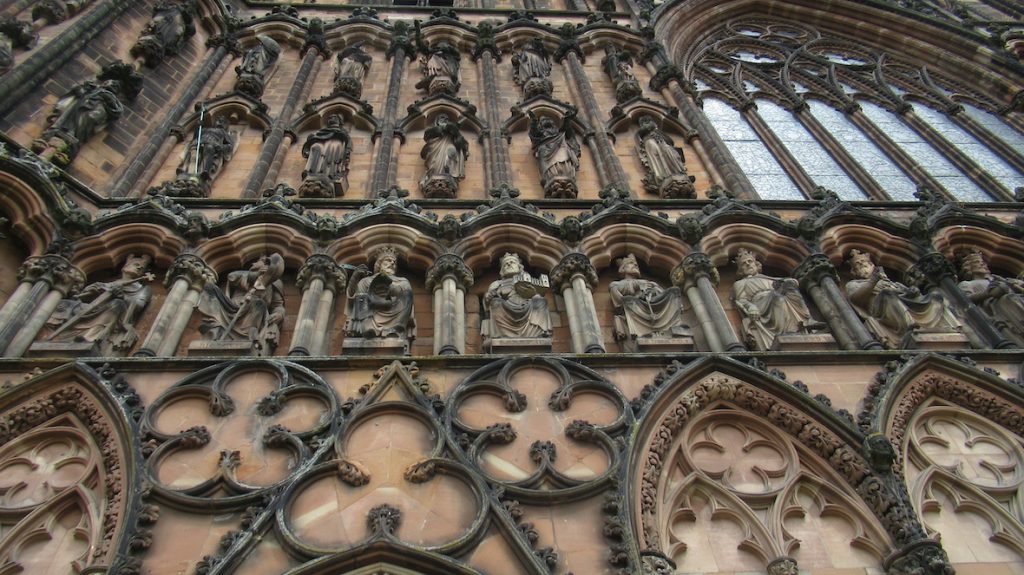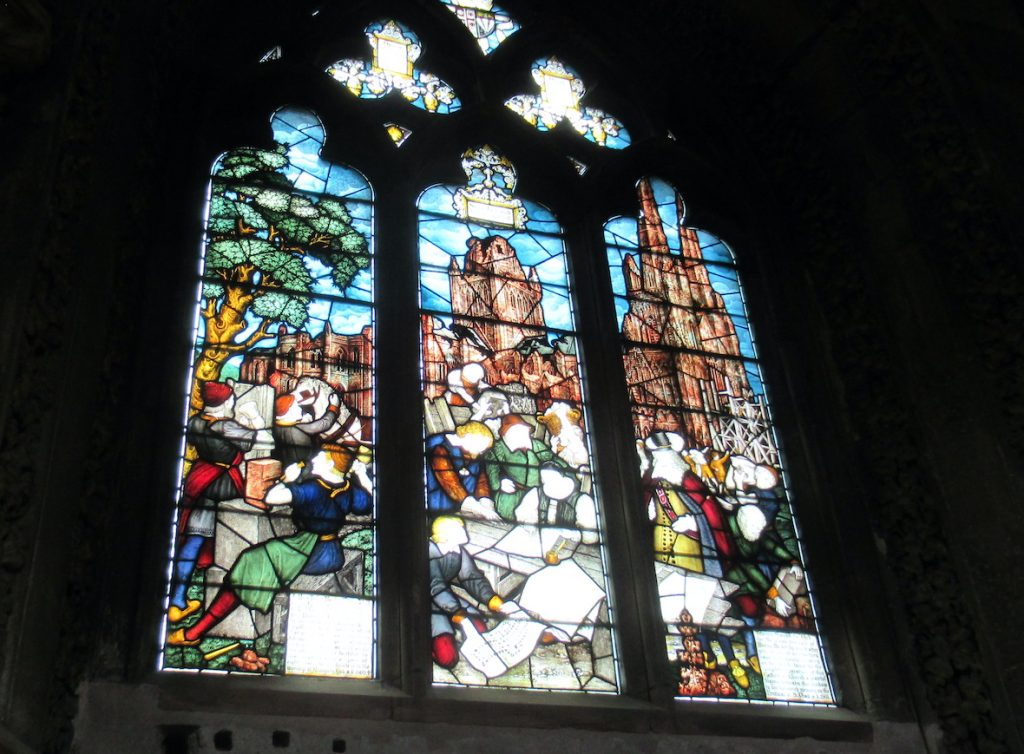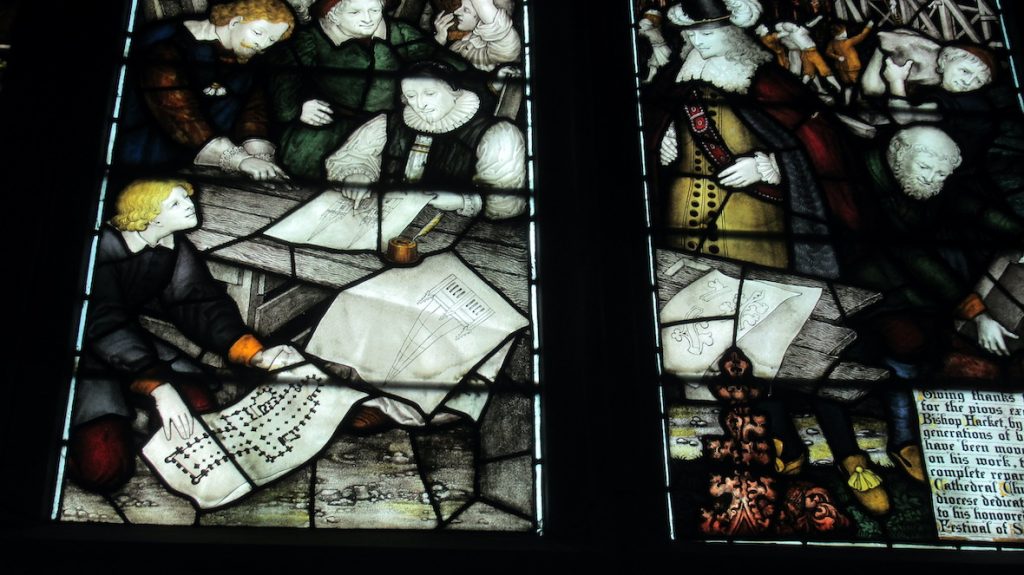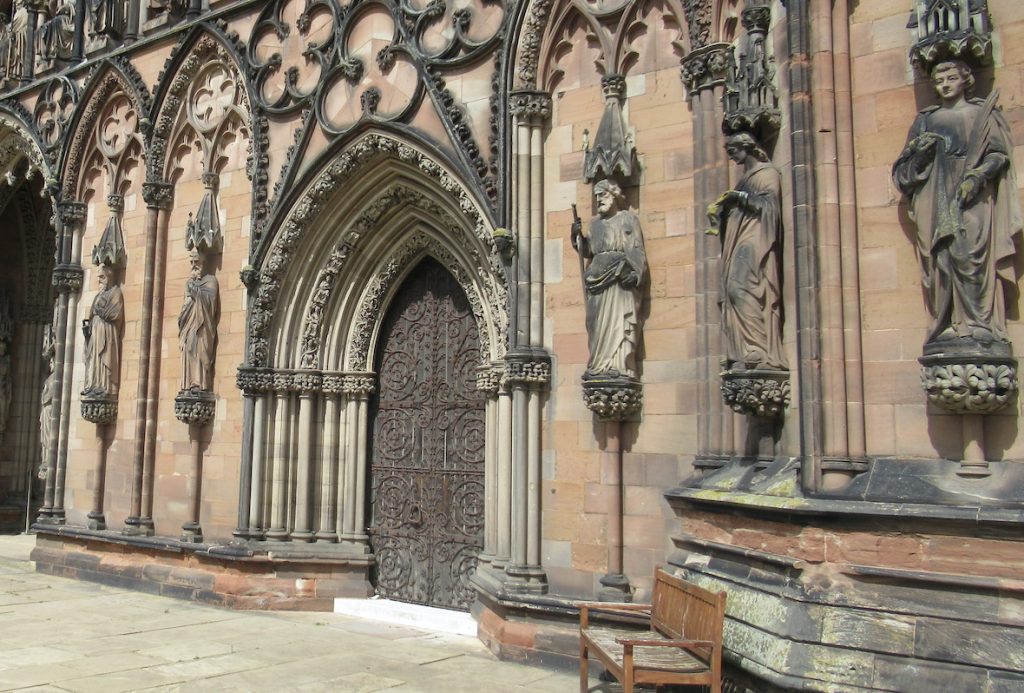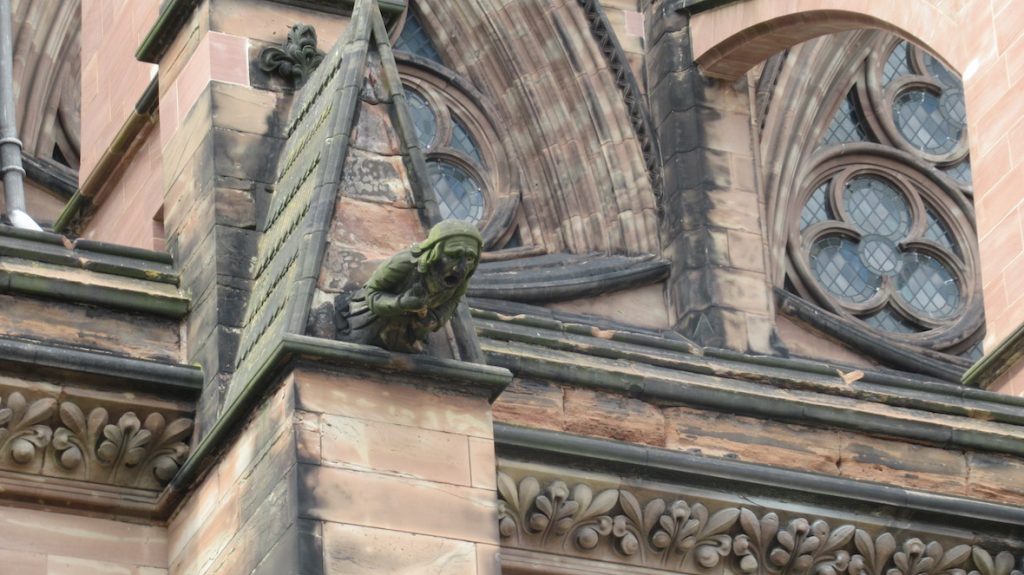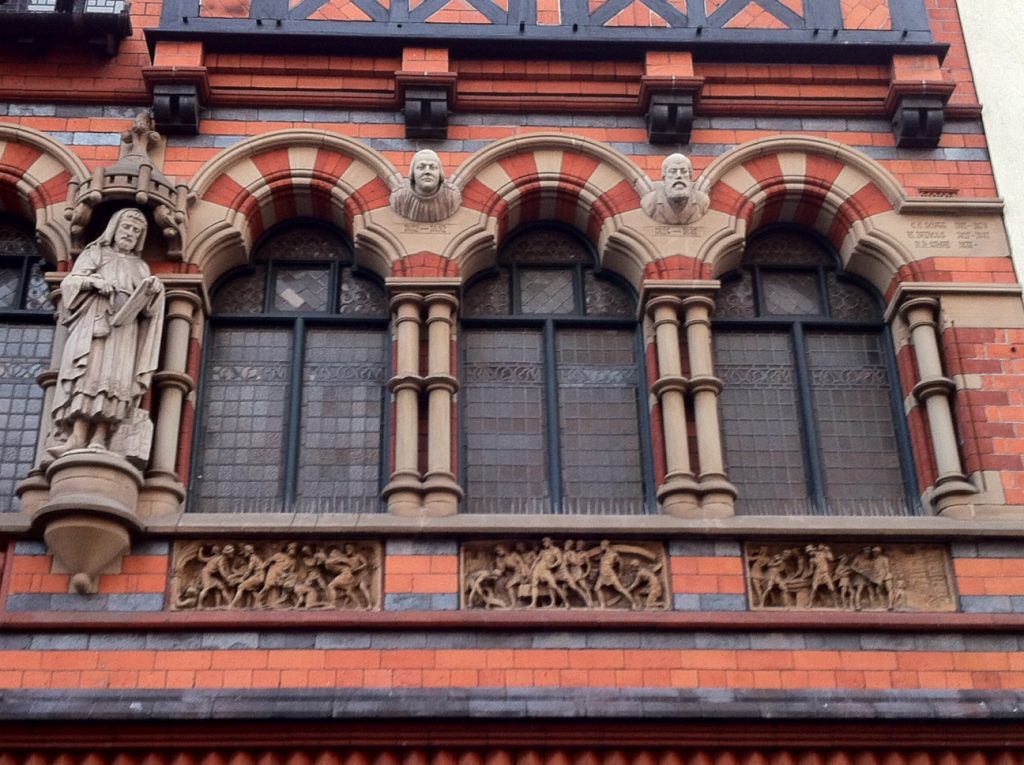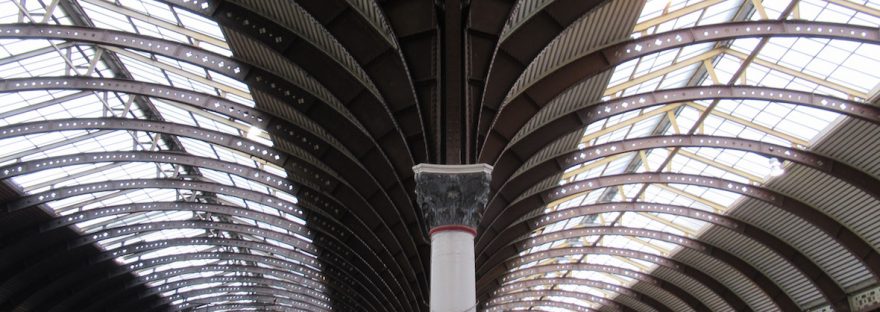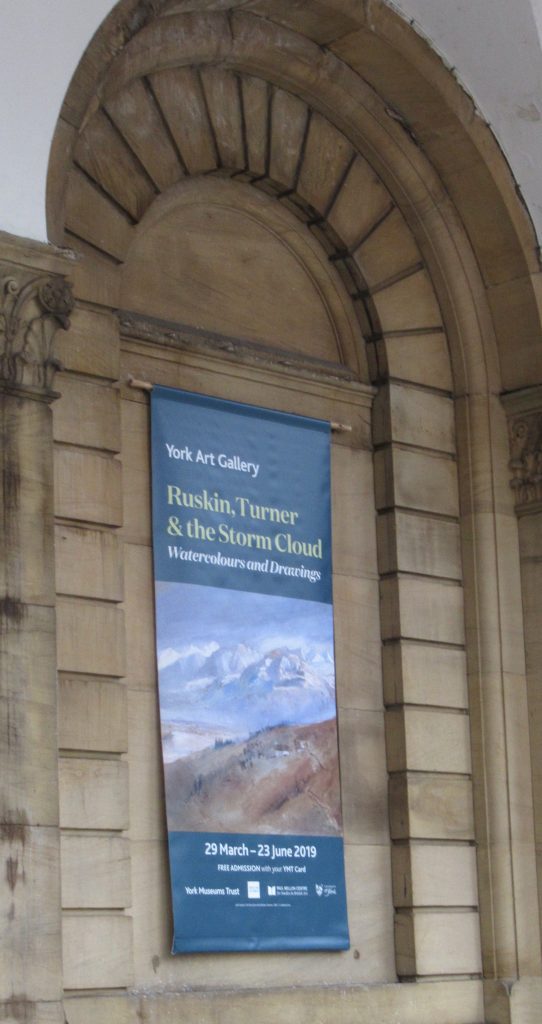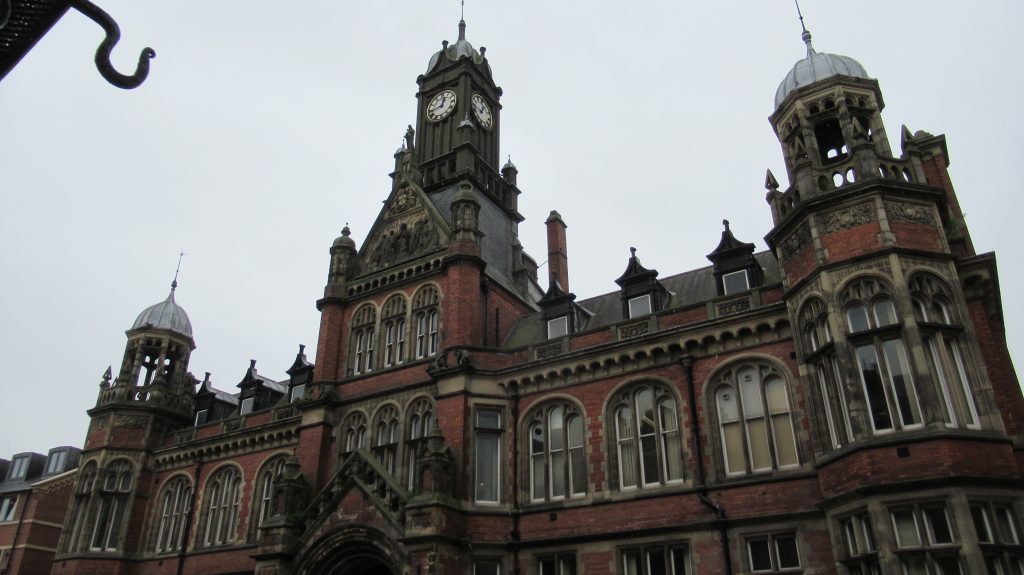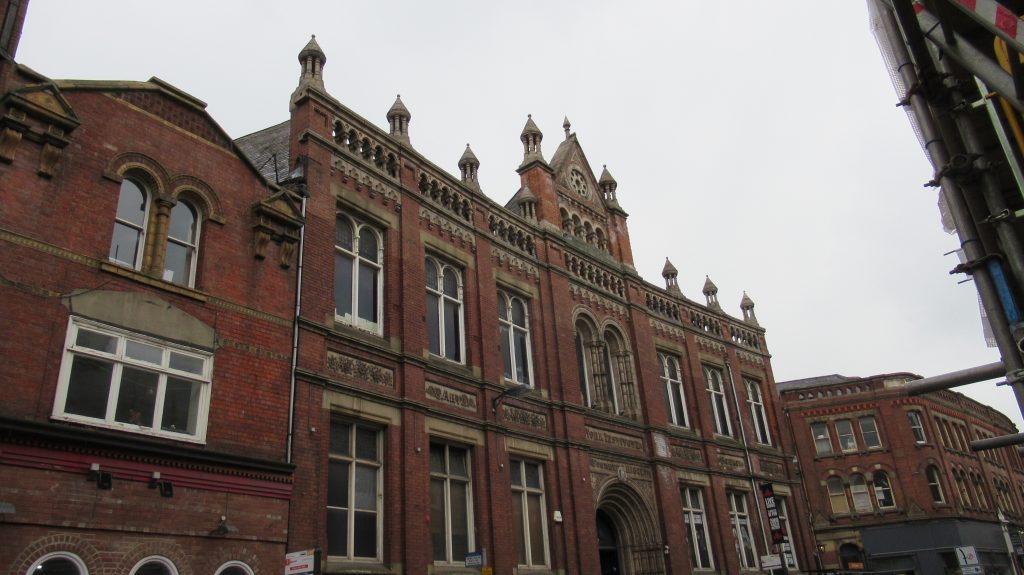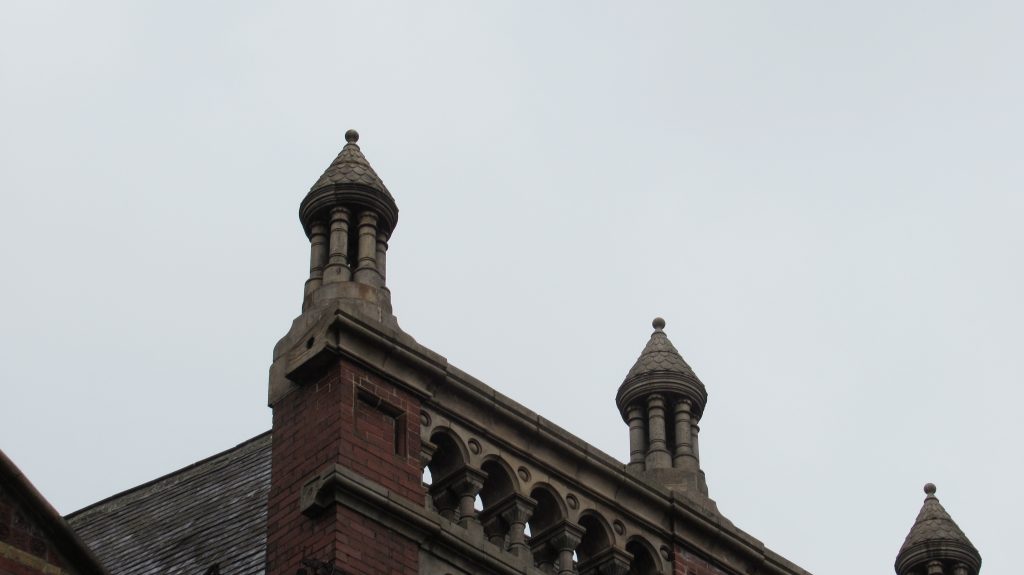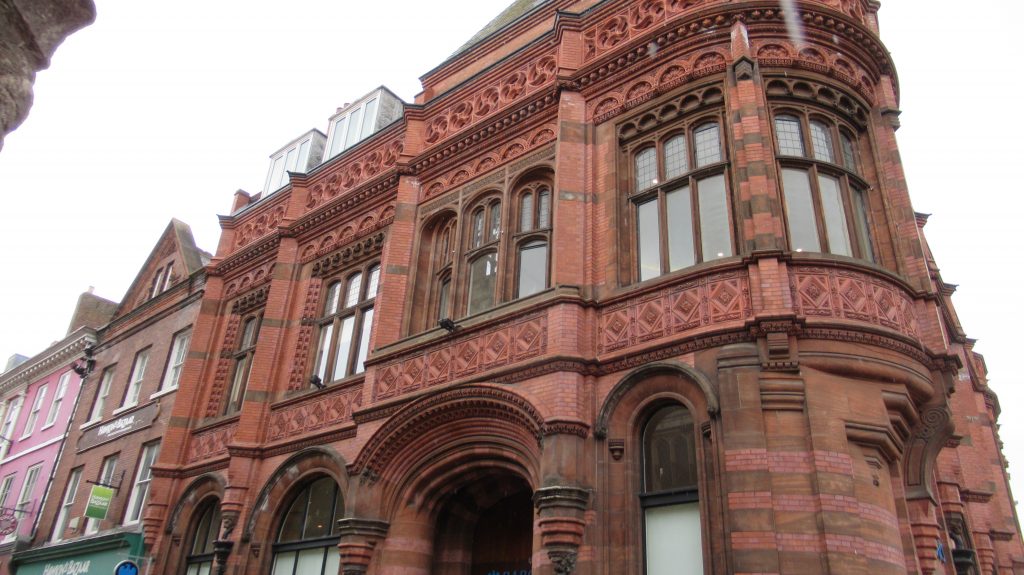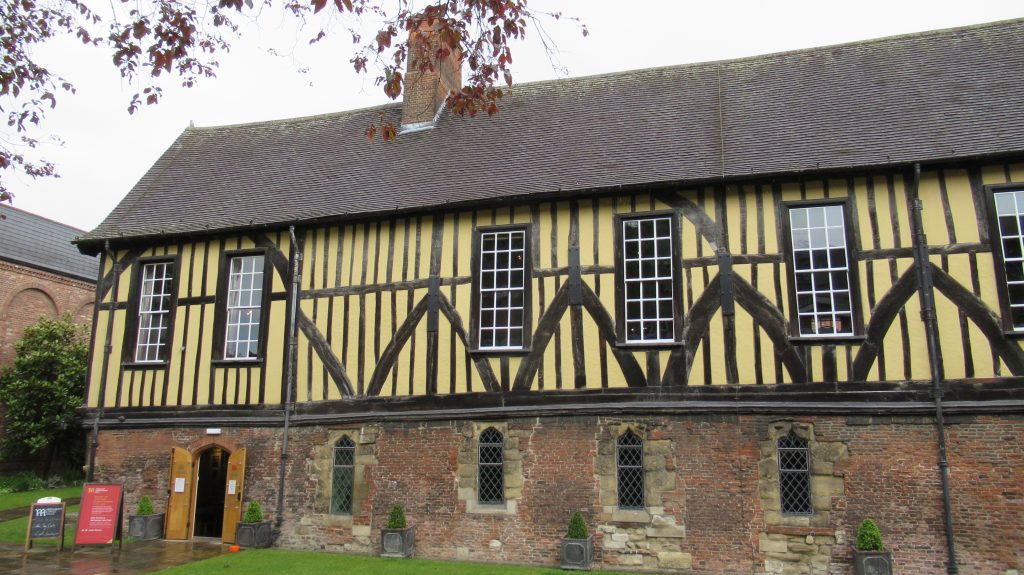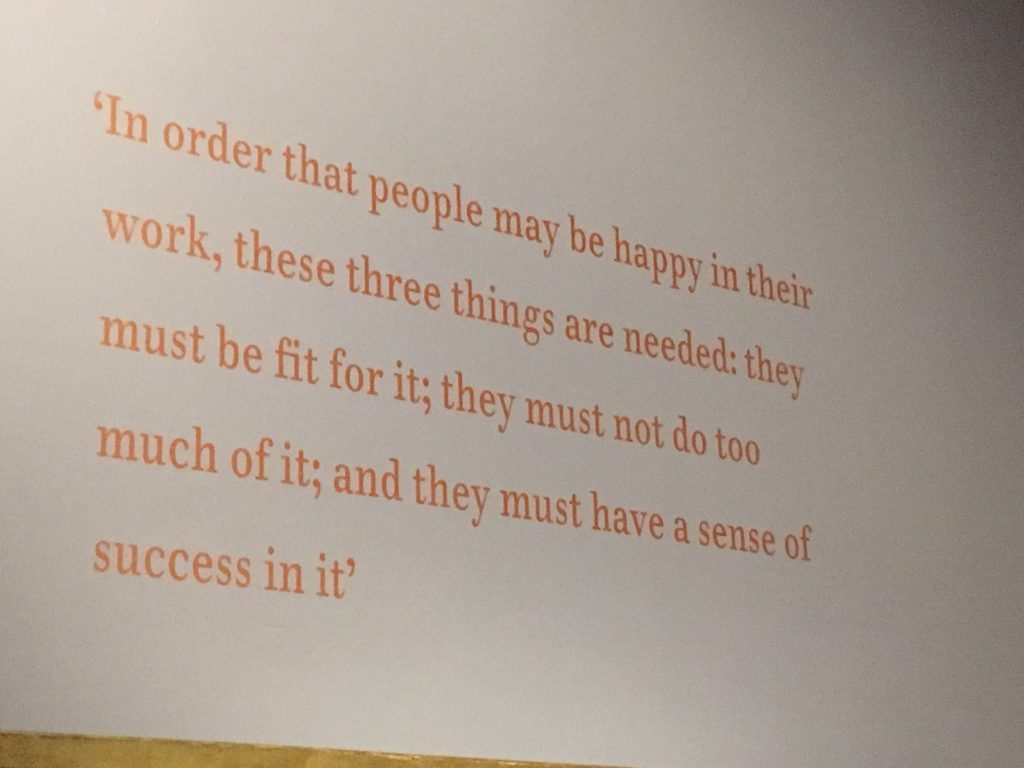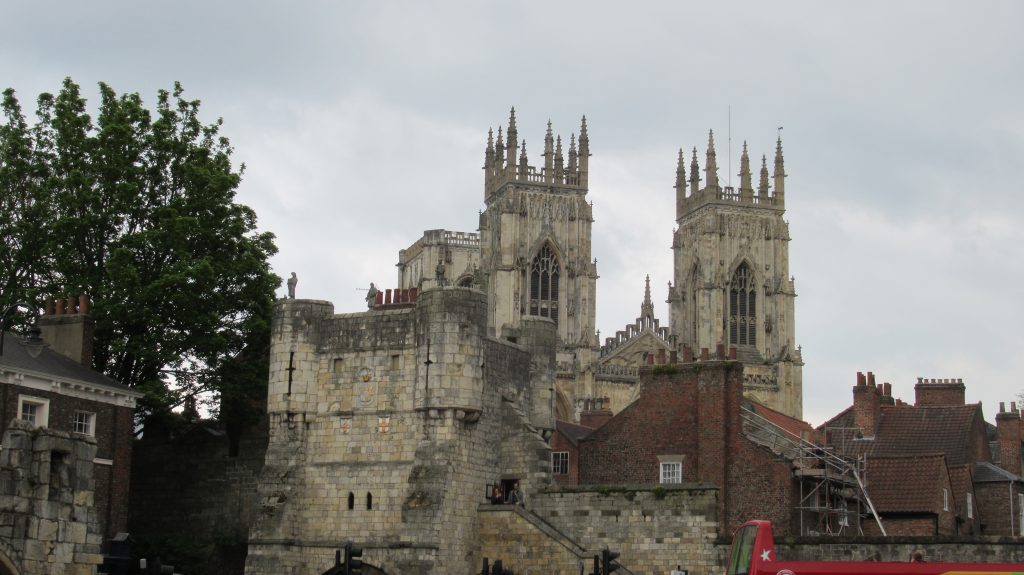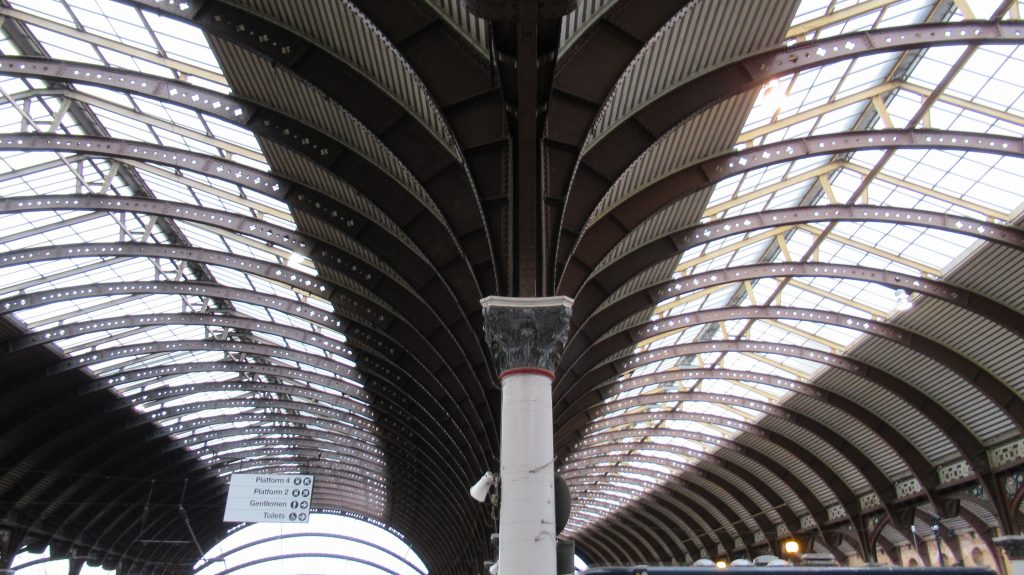On Saturday, 13 September I’m doing the second of my Nottingham Art Deco architecture tours for Art Deco Society UK. As I write, there are just 3 tickets remaining. I’d recommend joining ADSUK if you love all things Deco, and you will receive a discount on their events.
Nottingham: Art Deco in the Details, 2 pm, Saturday 13, September 2025.
Since I’ve followed up my interest in Art Deco architecture, I’ve been looking for it everywhere I go. After taking note of Long Eaton’s Fothergill building, we headed to the other end of the High Street to find the former Burton shop. If you’ve been on any of my Art Deco walks in Nottingham, you’ll know that I am a bit obsessed with the shops built by Montague Burton The Tailor of Taste. The one in Long Eaton was opened in 1935 in a hail of hyperbolic publicity.
The Long Eaton Advertiser, Friday, December 6, 1935 waxed lyrical about the “mammoth building” which “stands like a crystal palace, glistening in the sunshine and adding dignity to Long Eaton’s shopping centre.”
“Montague Burton buildings are easily recognisable throughout the country by the originality and beauty of their design, but now the palace is stamped and sealed with Neon Sign Lettering, telling the world that it belongs to Montague Burton, Ltd.”
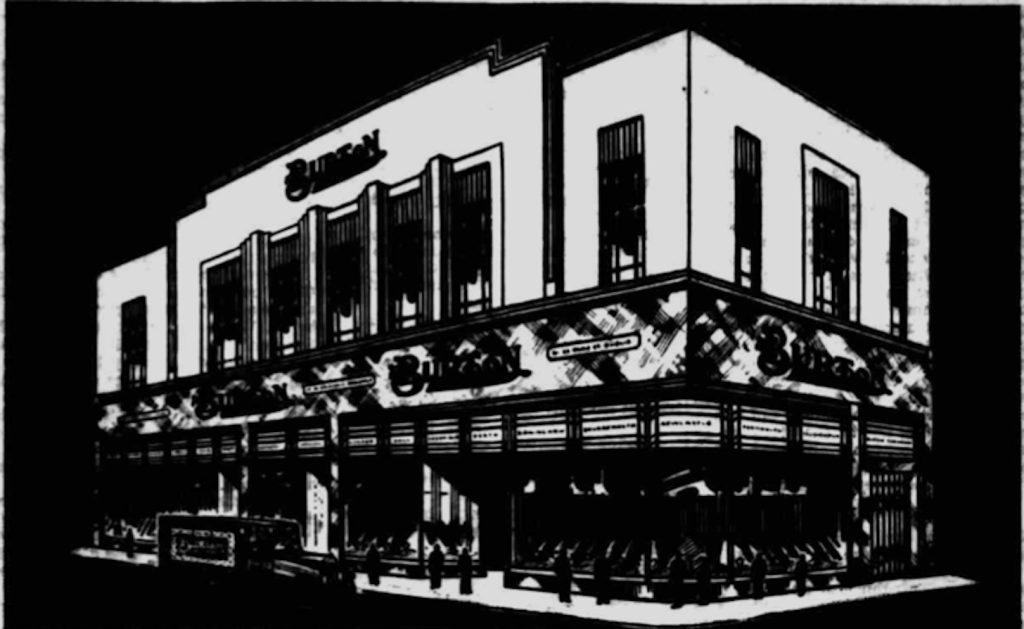
“A magnificent structure, noble in conception, graceful in design, and occupying a prominent position in the centre of town. Impressive in appearance, and commanding the admiration of the general public, this triumph of the building profession should form an enduring monument to the vision and enterprise of Montague Burton, whose ever-increasing chain of tailoring establishments throughout Great Britain and Ireland forms one of the most interesting romances of trade.”
“The building and its two lofty storeys, with stately columns rising to the top, and crowned with a massive pediment bearing the firm’s name, which at night is illuminated, suggests solidity of construction enhanced by artistic ensemble.”
You get the gist… this was a showpiece of the Burton empire, so much so that not only did it feature The Chain of Merit Windows but also five foundation stones with the names of members of the Burton family.
However, these days, since Burton closed down in 2021, the shop is not in a great state. It’s currently on the market, and it retains part of its original shop front. So we had a close look…
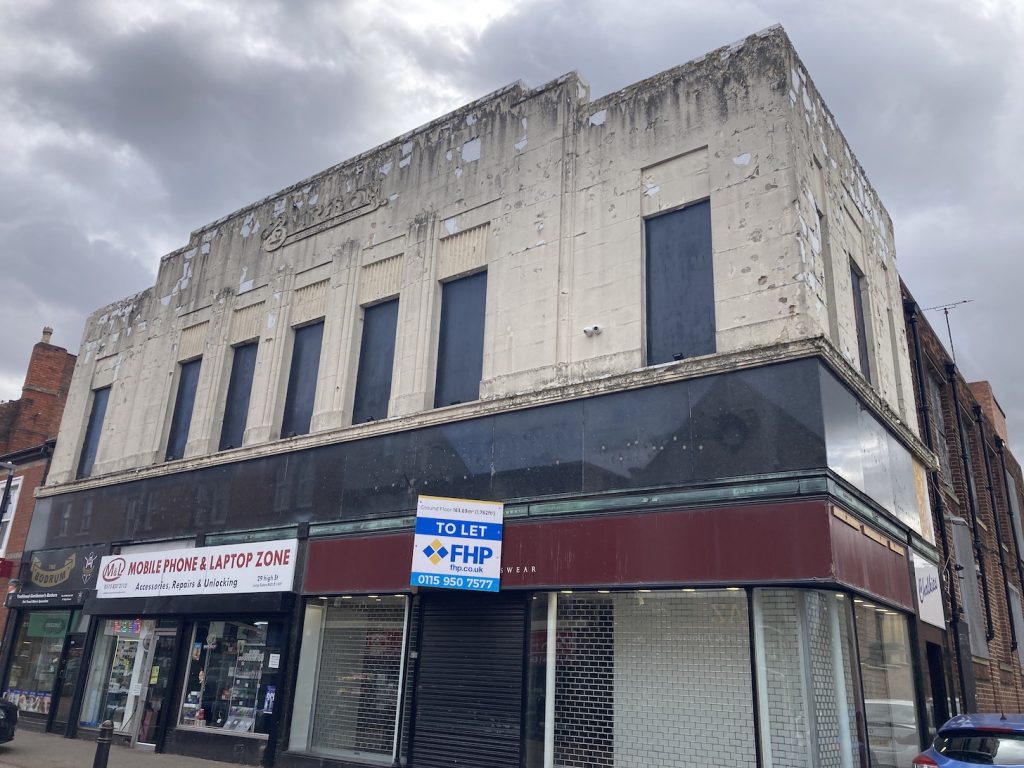
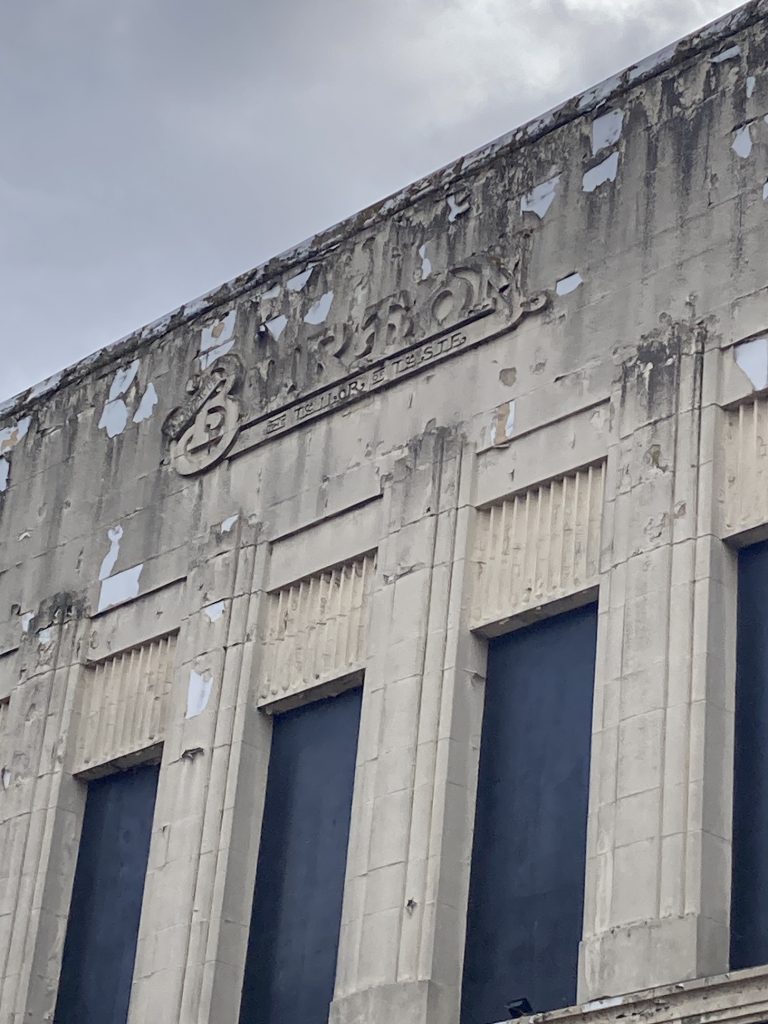
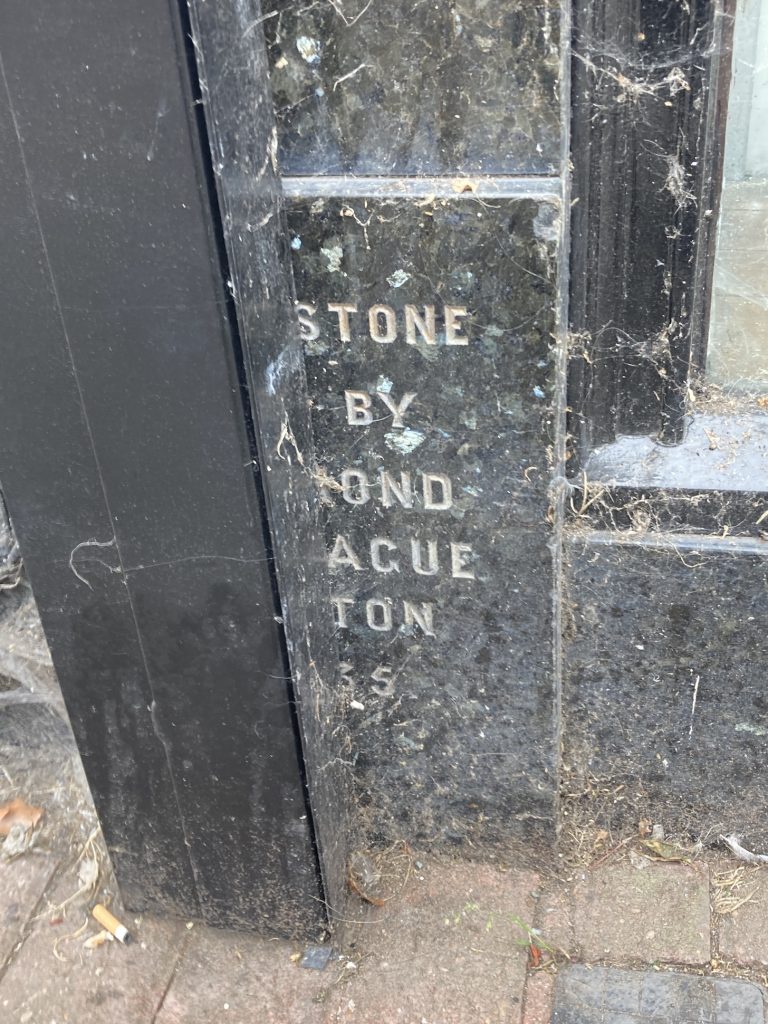
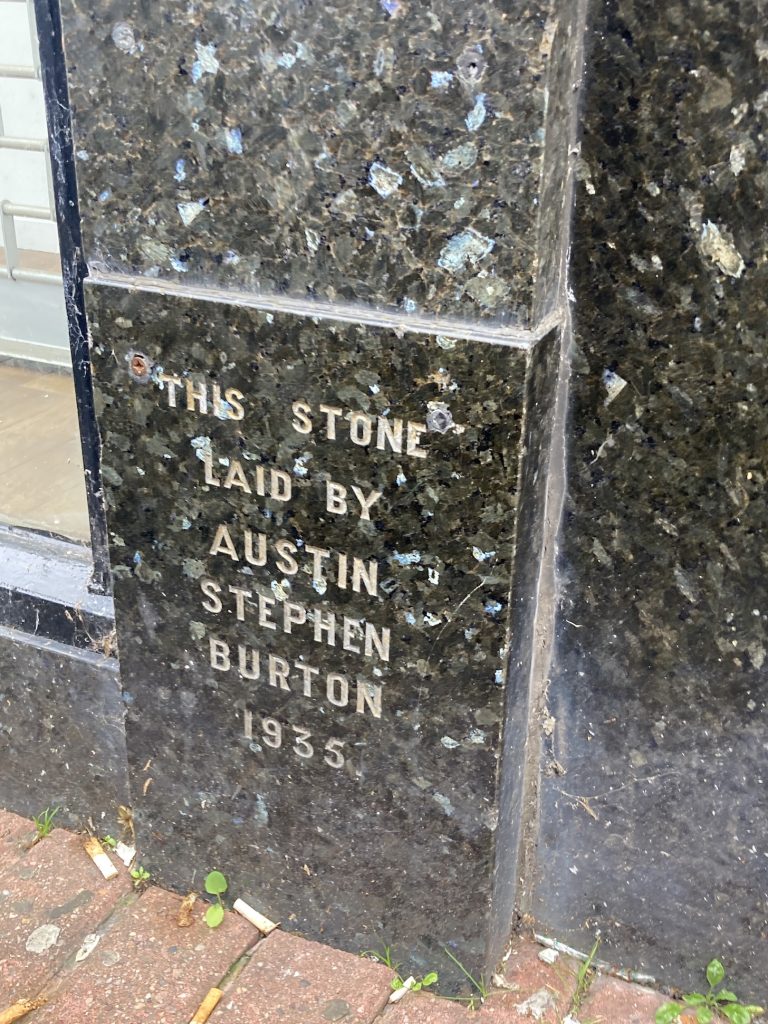
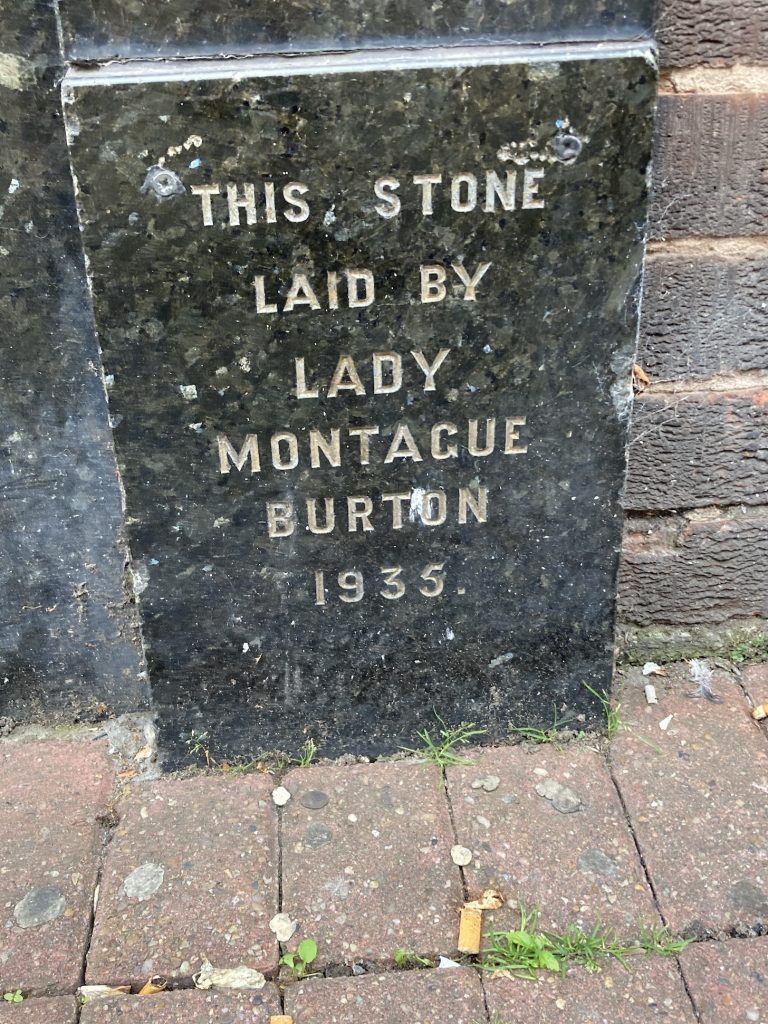
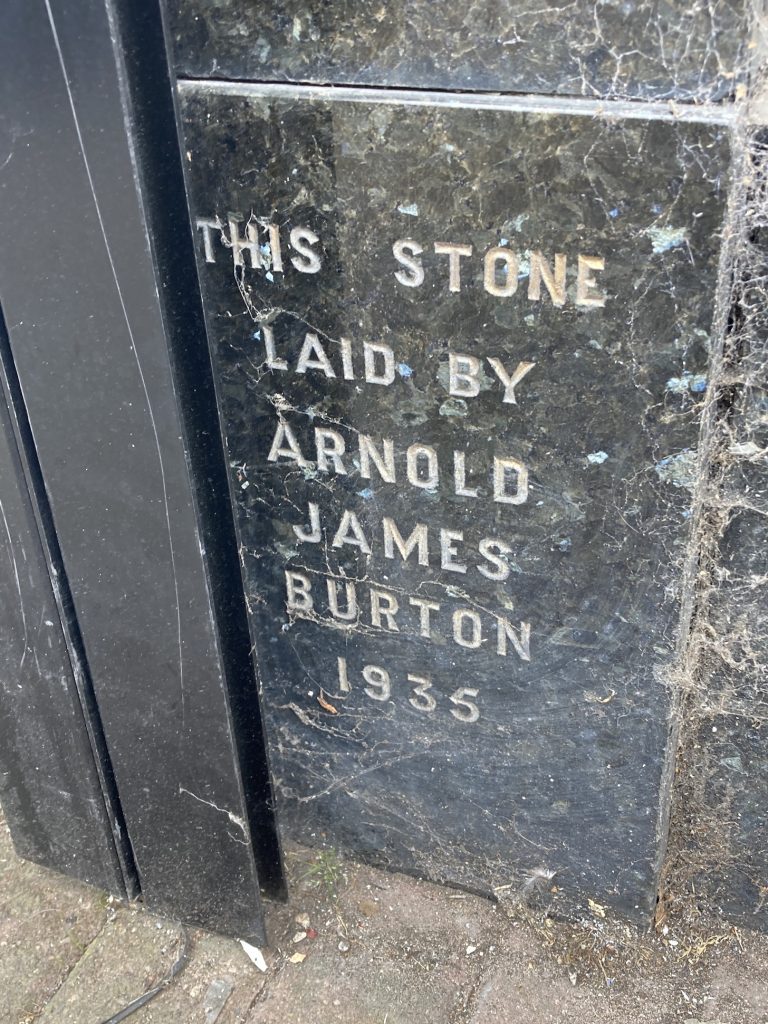
Foundation stones laid by Lady Montague Burton (Sophie Amelia Marks Burton (1887-1957) born Worksop, wife of Montague Maurice Burton (1885-1952) (born Meshe David Osinsky, in Lithuania). Their twin sons, Raymond Montague Burton and Stanley Howard Burton (stone covered), their younger son Arnold James Burton, and Austin Stephen Burton (a nephew or cousin or possibly an infant grandchild at the time?).
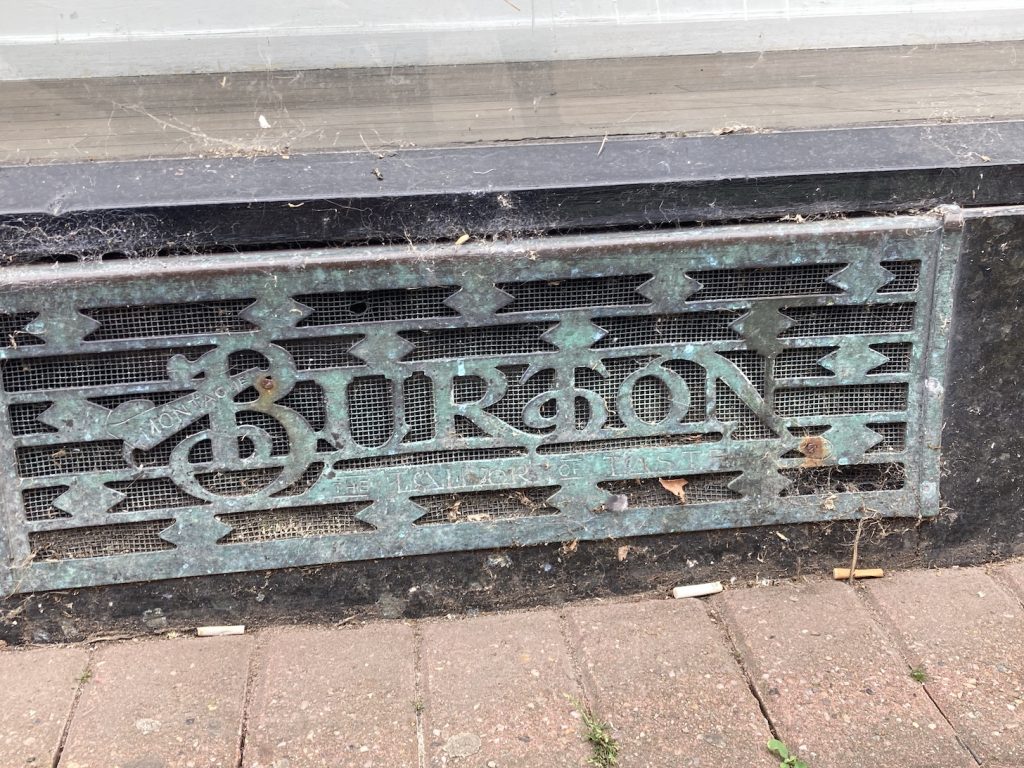
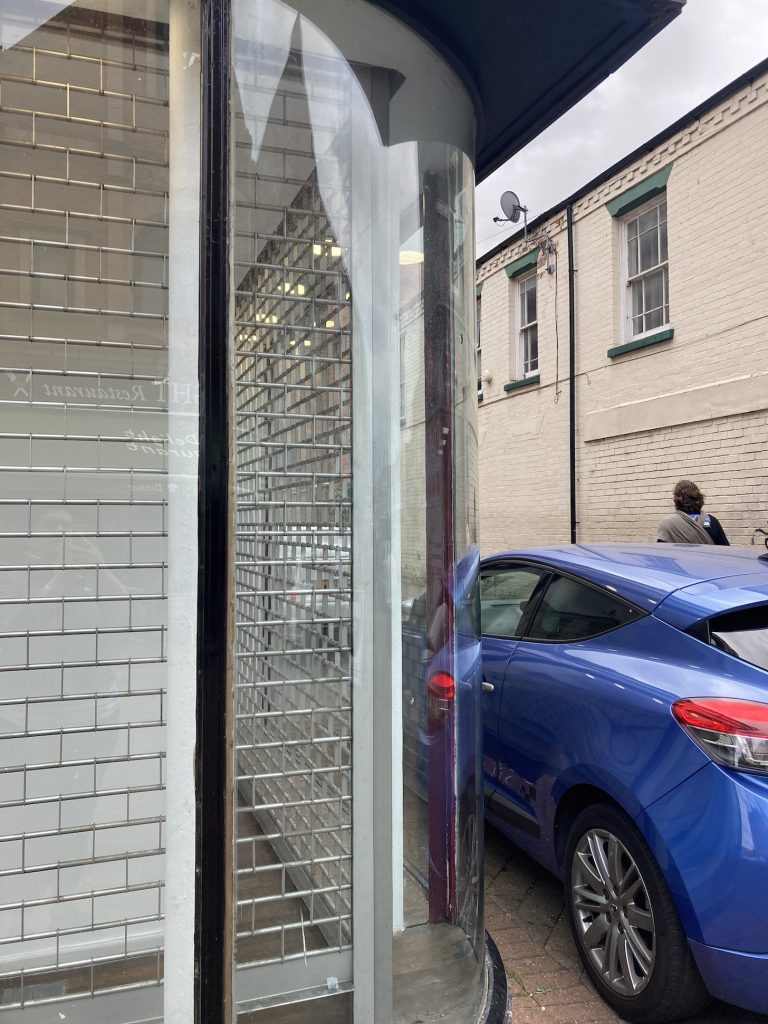
Upstairs, a snooker club – I wonder if this was the original use, as often Burton’s upstairs floors were used for billiard rooms.
It would be wonderful if this shop could regain some of its former glory. Fingers crossed.
Back at the Market Place, another building caught my eye, The Oxford pub, this had the words “Therm House” on the parapet. I immediately guessed it must have been a gas showroom, lo and behold, I was right.
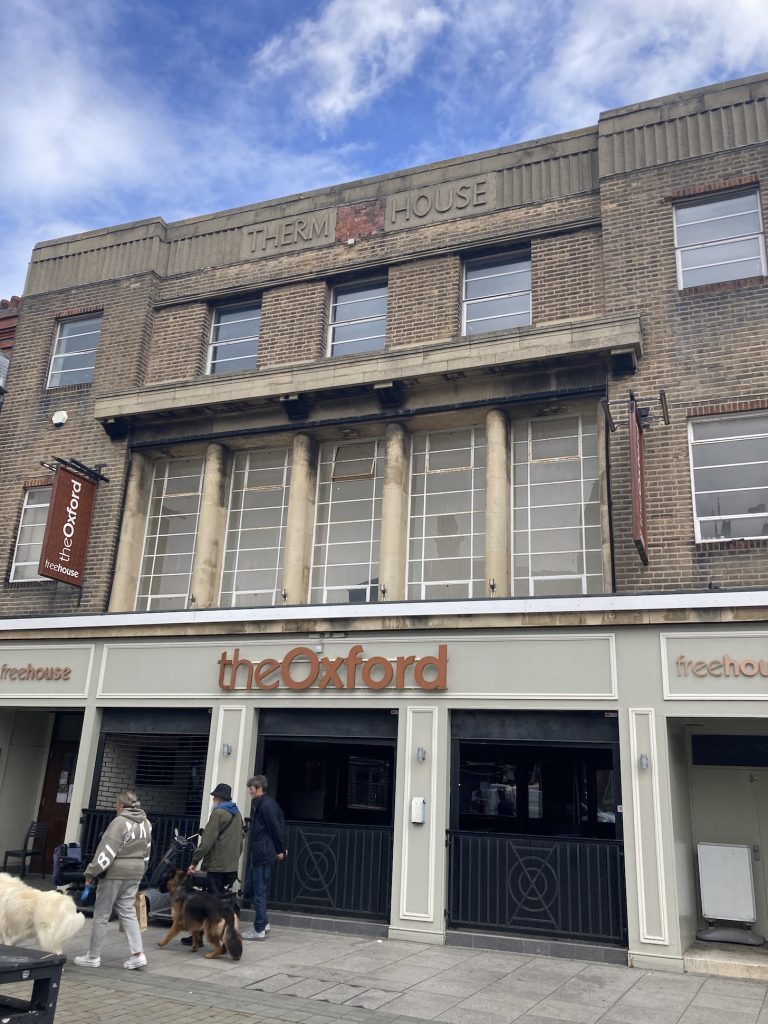
Therm House was announced in November 1938 in the Long Eaton Advertiser:
“A building which will add dignity to the Long Eaton Market Place will be “Therm House,” which Messrs F. Perks and Son will commence erecting within the next few days. The Long Eaton Gas Company have certainly planned through Mr. J E. Dodd, the well-known architect, attractive and commodious premises which will occupy the site… On the ground floor there will be showrooms and offices. The first floor provides for a demonstration room to accommodate 300 people, along with a projector room and accommodation for a cafe.”
Indeed, the Oxford Cafe was in the building for a period (and the name remains today on the pub).
“Therm House” will radiate “light and power” in the old market.”
Mr Therm was an anthropomorphic flame character used by Gas companies in the UK to advertise the convenience of their power and household appliances, appearing from the early 1930s to around the 1960s. The Mr Therm logo was originally at the top of the building between the two words on the parapet.
Mr Therm even had his own swinging theme song…”Meet Mr Therm”. With some choice lyrics:
“Meet Mr Therm, he’ll make your life more easy and very much less greasy, so meet Mr Therm…”

Finally, for now, Long Eaton has recently lost its Art Deco Cinema. This is all that’s left of the Galaxy Cinema on Derby Road, Long Eaton.
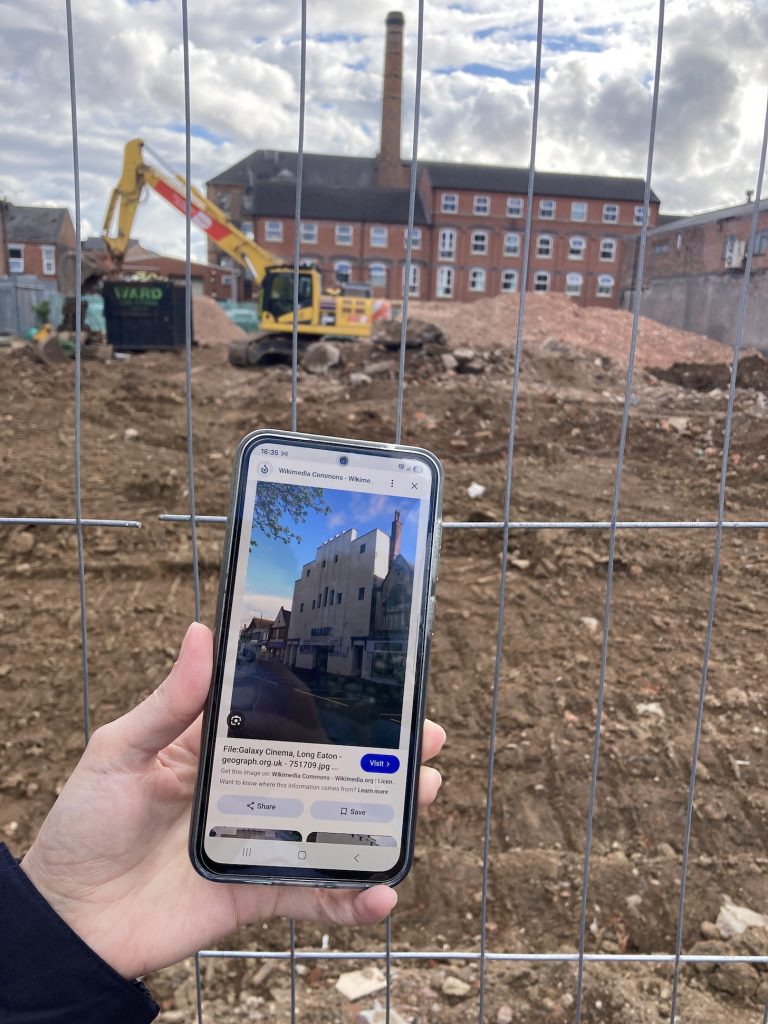
There will be a few more interesting buildings in Long Eaton in the next post. Until then, if you’d like to find out more about Art Deco Architecture and the buildings of the 1930s, join me for a tour of Nottingham for Art Deco Society UK on Saturday, 13 September, 2 pm.
If you’d like reminders of walk dates and blog updates, subscribe to my newsletter and support my work.
